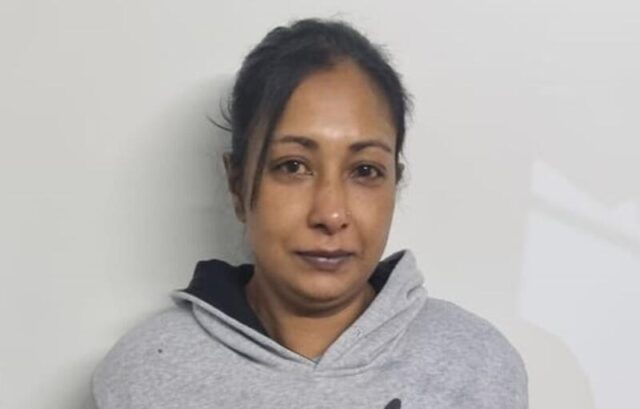An unemployed Pietermaritzburg mother who allegedly mastered the art of manufacturing counterfeit money after watching endless videos on Google and Instagram was recently arrested in a late night police raid.
AN UNEMPLOYED Pietermaritzburg mother who allegedly mastered the art of manufacturing counterfeit money after watching endless videos on Google and Instagram, was recently arrested in a late night raid by police at her Bombay Road home.
Shobana Manipersadh, 42, a qualified geo-technician, appeared in the Pietermaritzburg Magistrate’s Court on Thursday on charges of producing and manufacturing counterfeit money.
She was arrested after months of surveillance of her home and several businesses on Bombay Road by members of the uMgungundlovu Crime Intelligence unit, the Mountain Rise Crime Prevention unit, the Mountain Rise K9 unit and Mi7 Security.
She was released on R1,000 bail and the matter was adjourned to later this month for further investigation.
A source close to the investigation said Manipersadh and her husband, who had been employed in the IT sector, lost their jobs during the Covid-19 pandemic. The couple have two school-going children.
Manipersadh’s job entailed her collecting and analysing geological data from rock, soil and water samples.
“In July this year they tried to sell their home but were unsuccessful. The couple were in a financial crisis. It is alleged that at this point the woman began looking at ways to make fake money,” the source added.
It has been alleged that through online searches on Google and Instagram, Manipersadh found several videos on how to manufacture fake money.
“This was an easy way of out her financial mess,” the source claimed.
In addition to manufacturing the money, Manipersadh is accused of selling the fake money to people in her suburb.
It has been alleged that she charged a R200 fee for R1,000 worth of fake notes.
The police source said they began working on the case a few months ago after receiving information that fake money was circulating in Bombay Road.
“Supermarket and tuck shop owners complained that a high volume of fake R100 and R200 notes were being used to purchase goods in their stores.”
Manipersadh allegedly used runners from the neighbourhood to purchase bread and cigarettes for her with the fake money.
“The purchases were done mostly at night. The poor lighting made it difficult for the business owners to see that the money was fake.”
Their investigations eventually led them to the suspects’ home on October 19.
“We swooped on her home in a late night raid. We found the equipment which was used to manufacture the fake money in one of the bedrooms. This included a Canon Pixma colour printer, clear nail polish, different types of ink, dyes, a cutting board, specialised coloured paper and various tools.”
It has been alleged that the process to produce the fake money included Manipersadh scanning the R100 and R200 notes and then printing them on the specialised paper.
“It is believed she then used her artistic abilities to apply the inks and dyes to the printed paper. The nail varnish was used to get a shine on the fake note to make it look authentic. Investigations show this was an intricate and labour intensive process. It could take up to two hours to make just one note,” claimed the source.
Police also seized several white envelopes with fake money at Manipersadh’s home.
“The envelopes were marked with names and ready to be sold. In one envelope there was R1,000 in counterfeit notes and the payment required was R200. In another we found R2,000 in fake notes and payment of R400 was due. In total, R2,600 worth of counterfeit money was found,” said the source.
The suspects’ phone was also seized by police.
“An analysis of her phone showed she had searched several sites on how to manufacture fake money,” the source alleged.
He said prior to Covid-19, Manipersadh was a law-abiding citizen.
“She and her family were living in their home for 15 years and paid a bond. The couple come from good, well-respected families.”
He added that the lower end of Bombay Road was plagued with crime and drugs, and the circulation of the counterfeit money had contributed to the deterioration of the local economy.
Local business owners, who did not want to be named, said the counterfeit money was destroying their businesses.
Said one tuck shop owner: “A few weeks ago a boy came to my shop to buy cigarettes, bread and sugar with a R200 note. I checked the note, it did not look right. I told the boy that he needed to go back and get another note. He returned with a R100. I then compared it with another note and (it) looked almost the same but the colour was off.
“I asked the boy where he got the money from and he pointed in the direction of the woman’s home. We are all struggling financially. Our small businesses cannot survive if fake money remains in circulation. I am glad that the police have made a breakthrough in the case.“
A supermarket owner said that the use of fake money had been a problem in the area for months.
“I have been a victim of it twice already. People use the money to buy groceries. It is difficult to tell the difference between the real and the fake.”
Another tuck shop owner said she had to get a machine to detect the fake notes.
“Before a customer pays for their goods, I ask them if the money is fake. I show them my machine. I also warn them that I would not hesitate to call the police. Unfortunately I have to resort to these tactics to survive as a small business.”







